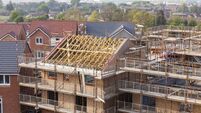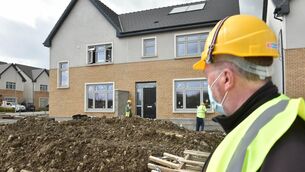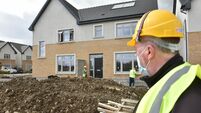ieExplains: Breaking down the promises in Government's new housing plan

A fund of €100m will be created in 2026 to acquire second-hand properties to house families who have been living in emergency accommodation for a prolonged period.
The Government has launched its fourth housing plan in 12 years, called
The new plan, which comes 11 months into this Government’s term, runs to 106 pages and promises to deliver 300,000 between now and the end of the decade. But will it solve the housing crisis?
This is the biggest question that has gone unanswered. Previous governments had set yearly targets for housing completions.
There was controversy following last year’s general election as Fianna Fáil and Fine Gael continuously said that 40,000 homes would be built in 2024, but only 30,000 were delivered.
This is despite the previous government deciding to set new targets last year, just three days before the election was called.
The Government has now decided to move away from the yearly figures, with opposition parties accusing it of attempting to dodge accountability if it had ended up underperforming.
Housing minister James Browne has repeatedly stated that he has waited for the new plan to be launched to take action, arguing that he has already introduced measures to ease the housing crisis.
This included changes to the rent pressure zones (RPZ) that will see all rental properties come under the rent cap increase. For this reason, there were very few policies in the plan that had not been announced.
An additional €2.5bn will be allocated for the Land Development Agency, with a €400m Ireland Strategic Investment Fund (ISIF) created for small builders.
The Government says there will be a “focus on ending homelessness and providing the housing supports needed for older people, disabled people, and Travellers to achieve long-term secure housing that meets their needs”.
One way this will be done, it says, is by delivering 300,000 homes as the plan recommits to ending homelessness by 2030.
A fund of €100m will be created in 2026 to acquire second-hand properties to house families who have been living in emergency accommodation for a prolonged period.
The Government is set to increase the maximum payment rates for the Housing Assistance Payment (HAP).
The Government has been stating for years that the only way to get house prices down is “supply, supply, supply”.
The plan says that for “those looking to buy a home affordably”, it will develop a new “starter homes programme” which will deliver an average of 15,000 affordable home supports.
The Government did not, however, say how many homes this would involve. The programme will rely on existing schemes — including the first home scheme, the help to buy scheme, the vacant property refurbishment grant and the local authority affordable purchase scheme, which is being renamed the starter home purchase scheme.
The Government has reiterated its plans to extend RPZs nationwide to cap rent increases at 2%. It also vowed to create “more cost-rental homes”, but did not state how many tenancies would be created.














